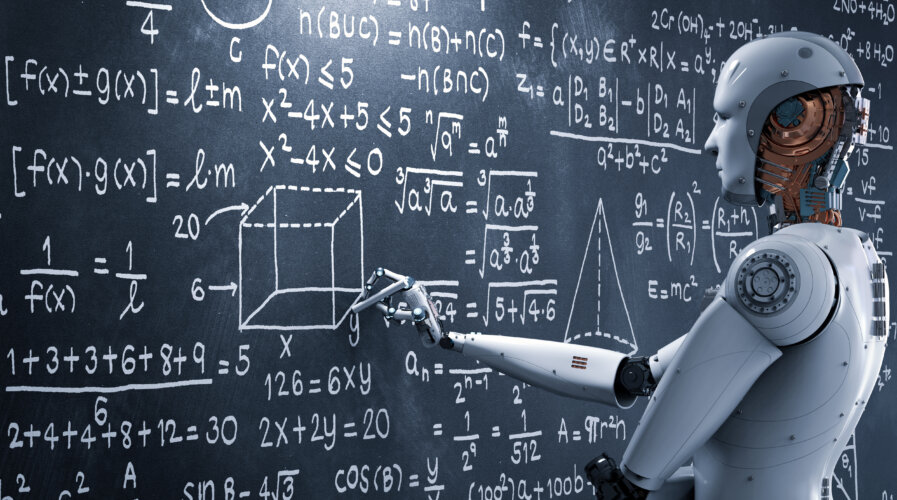
Here are the most common uses of AI you can find today.Source: Shutterstock
Here are the most common uses of AI you can find today
- Tech Wire Asia compiles examples of the myriad uses of AI on computers, applications, software, tasks, and technologies.
We live through a period where the adoption and use of artificial intelligence (AI) stands at a turning point. What seemed impossible ten years ago is commonplace today–like machines outperforming humans on many tasks. In short, AI’s rapid development in the past decade has made it almost indispensable in our lives today.
So much so that, in a recent report, PWC predicted that AI could contribute up to US$15.7 trillion to the global economy in 2030, more than the current output of China and India combined. “Of this, US$6.6 trillion is likely to come from increased productivity, and US$9.1 trillion is likely from consumption side effects,” the report noted.
What was once just science fiction has become a near-ubiquitous technology. In the last couple of years alone, the groundwork has been laid for a more AI-enabled future where creativity can be enhanced, productivity increased, and businesses can operate more reliably and efficiently.
From the personal assistants in our mobile phones to the profiling, customization, and cyber protection that lie behind more and more of our commercial interactions, AI touches almost every aspect of our lives. And to think it’s only just getting started.
As such, Tech Wire Asia has compiled the uses of AI that have been the most common in recent times.
AI in workplace
The workplace is probably where AI is expected to thrive the most. When it comes to tasks, the fact remains that widespread AI adoption can have multiple benefits for a business and its employees. AI can automate mundane and repetitive tasks, allowing employees to focus on more complex and creative work. This increases efficiency and productivity while reducing the time spent on routine activities.
AI can also process and analyze vast amounts of data quickly, providing valuable insights for decision-making. Employees can make more informed and data-driven decisions by augmenting human intelligence with AI-powered analytics and recommendations. In fact, some companies are already looking to replace certain roles with AI.
On the customer service front, AI-powered chatbots and virtual assistants can handle customer inquiries and provide personalized support. To top it off, the rise of generative AI is even changing the game with chatbots.
Generative AI Chatbots can handle more complex inquiries without the need for human intervention, reducing the dependency on human agents even more than usual AI-powered chatbots would. Generative AI chatbots can analyze large volumes of data and learn from previous interactions to improve their responses.
AI-powered cars
From driverless cars to robots on the factory floor, many uses of AI have been transforming the automotive industry. AI is at the core of autonomous driving technology.
Its algorithms can analyze sensor data from cameras, LiDAR, radar, and other sensors to detect objects, recognize road signs, and navigate complex traffic scenarios.
AI also powers the advanced driver-assistance system (ADAS) features that assist drivers and enhance safety. Those systems include adaptive cruise control, lane-keeping assist, automatic emergency braking, blind-spot detection, and parking assistance. AI algorithms analyze sensor data and make real-time decisions to assist the driver and prevent accidents.
AI in cybersecurity
Cyber threats have become more sophisticated and frequent in recent years, making traditional security measures insufficient. That is where AI comes in with its ability to identify vulnerabilities and threats and respond in real-time. Security-focused AI can detect and analyze enormous amounts of data without interruption, seeking malicious activities while providing necessary recommendations.
On the other hand, bad actors can also weaponize AI in several ways. So in the aspect of cybersecurity, AI is a double-edged sword. In a 2019 report by Nokia, the Finnish giant revealed that cybercriminals use AI-powered botnets to find specific vulnerabilities in Android devices and then exploit those vulnerabilities by loading data-stealing malware that is usually only detected after the damage.
Considering this, security leaders can only stay ahead of bad actors by adequately understanding how AI can be weaponized. Then, they can develop effective strategies for confronting AI threats head-on.
AI in manufacturing
In the manufacturing industry, AI enables manufacturers to make data-driven decisions, automate processes, optimize resource allocation, and improve overall operational efficiency in the production environment.
Apart from automating quality control, AI can assist in identifying maintenance needs in advance, manufacturers can minimize downtime, reduce costs, and optimize maintenance schedules. AI can also optimize inventory management, demand forecasting, and logistics by analyzing historical data, market trends, and customer behavior patterns. This helps manufacturers streamline their supply chain, minimize stockouts, and improve order fulfillment.
For robotics, AI-powered robots and autonomous systems can perform repetitive or dangerous tasks with precision and speed. These robots can work alongside human workers or operate independently, increasing production capacity and reducing the risk of accidents.
AI in finance
AI is being extensively used in the finance industry to improve decision-making, automate processes, detect anomalies, and enhance customer experiences.
In fraud detection, AI algorithms can analyze large volumes of financial data in real-time to detect patterns and anomalies that may indicate fraudulent activity. This helps financial institutions identify and prevent fraudulent transactions, protecting both themselves and their customers. AI models can also analyze historical data and market trends to assess creditworthiness, predict market risks, and optimize investment portfolios. AI-powered algorithms can also continuously monitor and adapt risk models based on changing market conditions.
AI in finance can also be used to monitor regulatory compliance as well as provide insights on algorithmic trading.
AI use cases everywhere
AI is also being heavily adopted in healthcare, education, oil and gas, agriculture and retail as well. The list is endless are more use cases continue to be developed. The technology is also becoming more affordable in the industry, especially with so many startups offering uses of AI solutions for enterprises booming rapidly.
The AI hype will not be slowing down. For enterprises though, the need to ensure they know why they are going to use AI and not just investing in the technology to join the hype.
READ MORE
- 3 Steps to Successfully Automate Copilot for Microsoft 365 Implementation
- Trustworthy AI – the Promise of Enterprise-Friendly Generative Machine Learning with Dell and NVIDIA
- Strategies for Democratizing GenAI
- The criticality of endpoint management in cybersecurity and operations
- Ethical AI: The renewed importance of safeguarding data and customer privacy in Generative AI applications


